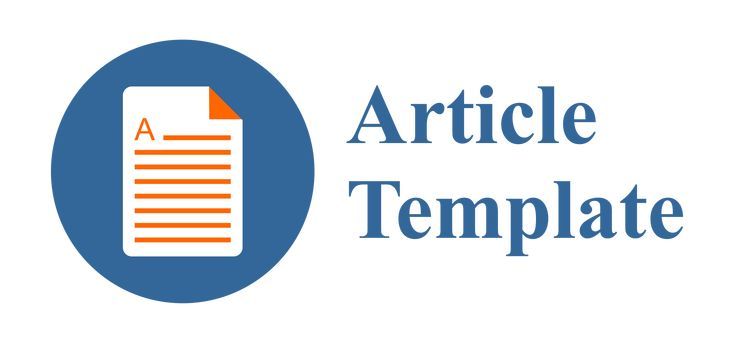Sistem Informasi Data Klien Berbasis Java Pada Kantor Notaris dan PPAT
DOI:
https://doi.org/10.29408/edumatic.v4i2.2515Keywords:
Client Data, Information System, Java, Notary and PPATAbstract
Information systems using computer technology in the era of globalization have experienced very rapid developments in almost all business fields. The data processing process becomes faster, the information generated is more accurate, and has an important role for the progress and development of a company or agency when carrying out its work activities so that it is more structured and time efficient. Notary Office and PPAT Muhammad Hanafi, S.H. is a company engaged in services. The information system running, until now, has not been computerized. Data recording is still written in books so it requires a lot of Manpower, the process of searching for data and printing reports takes a long time because it is storage cabinets, data is also vulnerable to damage and loss. The research objective is to design and develop this information system to be computerized in order to solve existing problems. The research method uses the Waterfall Model Development Life Cycle (SDLC), while the data collection uses interviews, observation and literature study. The system design in this study employs the decomposition function, DFD and ERD. The research findings are in the form of desktop applications implement Java and MySQL. The test results using black box testing successfully display the main menu of the application for further manage by office staff. The result is expected to be able to provide a convenience to office staff when processing client data and resolving existing problemsReferences
Agusvianto, H. (2017). Sistem Informasi Inventori Gudang Untuk Mengontrol Persediaan Barang Pada Gudang Studi Kasus : PT.Alaisys Sidoarjo. Journal of Information Engineering and Educational Technology, 1(1), 40–46.
Anggraeni, E. Y., & Irviani, R. (2017). Pengantar Sistem Informasi. Yogyakarta: Andi Offset.
Aswati, S., Mulyani, N., Siagian, Y., & Syah, A. Z. (2015). Peranan Sistem Informasi Dalam Perguruan Tinggi. Jurnal Teknologi Dan Sistem Informasi, 1(2), 79–86.
Hedianto, F. A., & Susilowati, M. (2018). KURAWAL : Jurnal Teknologi, Informasi, dan Industri. I(1), 34–39.
Hutahaean, J. (2015). Konsep Sistem Informasi. Yogyakarta: Deepublish.
Kristanto, Fernando, Y., & Ricoida, D. I. (2016). Sistem Informasi Pada Kantor Notaris dan PPAT Juhaidi, S.H. Skripsi. STMIK MDP Palembang.
Maulani, G., & Sejati, K. C. B. (2018). Sistem Informasi Pendaftaran dan Monitoring Pelayanan Jasa Notaris dan PPAT Rosita Yuwanasari, SH, M.Kn. Konferensi Nasional Sistem Informasi 2018, (429–434). Indonesia: STMIK Atma Luhur.
Maya. (2015). Membangun Sistem Informasi Dengan Java Netbeans dan MySQL. Yogyakarta: Andi Offset.
Muslihudin, M., & Oktafianto. (2016). Analisis dan Perancangan Sistem Informasi Menggunakan Model Terstruktur dan UML. Yogyakarta: Andi Offset.
Putra. (2020). Pengertian SDLC adalah: Fungsi, Metode dan Tahapan SDLC. Retrieved February 5, 2020, from Salamadian website: https://salamadian.com/sdlc-system-development-life-cycle/
Siddik, B., & Kholisho, Y. N. (2019). Pengembangan Modul Pembelajaran Perakitan Komputer Berbasis Multimedia Interaktif. EDUMATIC : Jurnal Pendidikan Informatika, 3(1), 13–19.
Sitohang, H. T. (2018). Sistem Informasi Pengagendaan Surat Berbasis WEB Pada Pengadilan Tinggi Medan. Journal Of Informatic Pelita Nusantara, 3(1), 6–9.
Udaksana, A. P. C., & Kusaeri, W. R. (2018). Rancang Bangun Aplikasi Digital School Dengan Java NetBeans IDE 8.1. Industrial Research Workshop and National Seminar (IRONS), (332–336). Indonesia: Politeknik Negeri Bandung
Widharma, I. G. S. (2017). Perancangan Simulasi Sistem Pendaftaran Kursus Berbasis WEB Dengan Metode SDLC. Jurnal Manajemen Teknologi Dan Informastika, 7(2), 38–40.
Widodo, A., Putranti, H. R. D., & Nurchayati. (2016). Pengaruh Kualitas Sistem Aplikasi Dan Kualitas Informasi Terhadap Kepuasan Pengguna Sistem Aplikasi RTS (Rail Ticketing System) Dengan Kepercayaan Sebagai Variabel Mediasi (Studi Pada Penumpang “KAI†Ekonomi Operasi 4 Semarang). Media Ekonomi Dan Manajemen, 31(2), 160–181.
Downloads
Published
How to Cite
Issue
Section
License
All articles in this journal are the sole responsibility of the authors. Edumatic: Jurnal Pendidikan Informatika can be accessed free of charge, in accordance with the Creative Commons license used.

This work is licensed under a Lisensi a Creative Commons Attribution-ShareAlike 4.0 International License.




